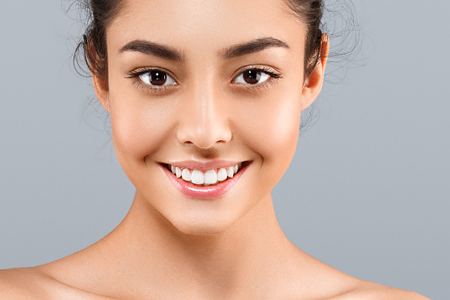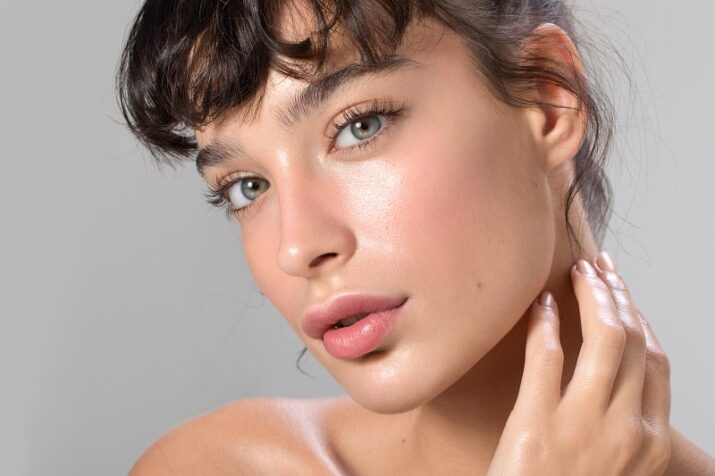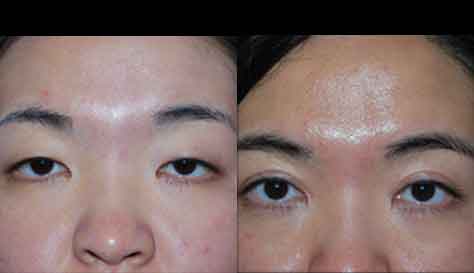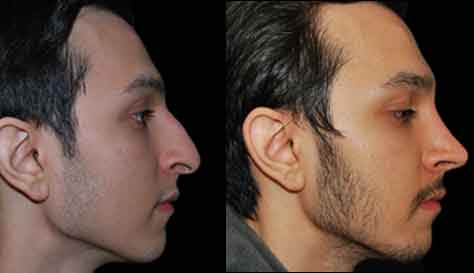Non-Surgical Eyelid Lift
Conveniently located to serve the areas of New Jersey and New York

The non-surgical eyelift and browlift use the injectable treatments to re-establish youthful proportions and rejuvenate tired eyes. Often a combination of neuromodulator and temporary fillers is used.
To lift the upper eyelids non-surgically, neuromodulator is injected into the muscles that pull down the eyebrows including the corrugator supercilli muscle between the eyebrows, and the orbicularis oculi muscle at the outer tail of the brow. Injecting these muscles allows the brows to lift, opening the upper eyelids. Being a very experienced injector, Dr. Ovchinsky can shape and tilt the outer brows. The result is a non-surgical browlift and the upper eyelids open up. This works best for the patients with less severe upper eyelid and brow drooping. With more advanced aging and heavier upper eyelids this technique is not as effective, and an upper eyelid lift (upper blepharoplasty) or an endoscopic browlift are better choices. Dr. Ovchinsky will evaluate whether you would benefit better from a surgical or non-surgical eyelift or browlift.
With aging, dark circles and sunken areas appear under the eyes. These sunken areas accentuate the appearance of the fatty bags in the lower eyelids, making them more noticeable.

To correct this, the dark circles or sunken areas of the lower eyelids can be injected with a filler, which would make them less sunken. This usually improves the dark circles as there is less shading in this area of the eye; the fatty bags also become less apparent as there is a smoother transition from the eyelid into the cheek area. The most common fillers used for this purpose are hyaluronic acid based fillers. The lower eyelids are composed of very thin skin and injecting these fillers too superficially can often result in visible lumps, nodules and irregularities. The best hyaluronic acid fillers to use are Restylane and Belotero because they are softer and create less lumpiness. These fillers also tend not to attract much water thus minimizing the swelling under the eyes.
Many patients will start with “non-surgical eyelid lifts” in their thirties when these changes start to occur, and continue with them into their late forties. Around the fifties the tissues of the eyes become loose and droopy enough that the injections have less of an effect, and this is when they will usually look for surgical options, such as blepharoplasty and/or browlift.
FAQ
What do I need to avoid before surgery?
If you are on “blood thinners,” you will be asked to stop them approximately one week prior to surgery. We also ask that you avoid certain over-the-counter medications. If you are taking some herbal supplements, you should stop those as well as they may contain blood thinning substances. Also, you have to completely quit smoking at least two weeks before surgery.
What about my daily medications before surgery?
You will have a preoperative appointment well in advance of your surgery when we will review all mediations with you. If you are on “blood thinners,” you will be asked to stop them approximately one week prior to surgery. We also ask that you avoid certain over-the-counter medications. You may continue taking most routine medications up until the morning of surgery with a small sip of water.
What happens after surgery?
You will go to the recovery room for a few hours until you are fully recovered from anesthesia. Once you are stable you will be taken home (or to a hotel) by your family member or a friend. You will want to stay relaxed for the first few days. You will need to keep your head elevated when in bed to help with faster resolution of swelling. You should begin to start walking, eating, and using the restroom the day after surgery. Your activity can slowly increase each day but it will take up to 2 weeks before you start to feel like your old self again. You should avoid any strenuous activity for 4 weeks. You will need to take medication prescribed to you by Dr. Ovchinsky, which usually include antibiotics, pain medicine, antibiotic ointment for the incisions, and occasionally anti-nausea medications.
Are there any dietary restrictions following surgery?
No. Patients can eat whatever they want. Advance your diet from liquids (fruit juice, milk shake, etc.) to soft food (pudding, macaroni and cheese, mashed potatoes and gravy, oatmeal, pasta) to solids as tolerated. To prevent dehydration, please drink as much juices and nutritional fluid as possible.
When will my stitches be taken out?
Stitches are normally removed five to six days after your surgery.
How soon will I be able to exercise?
Dr. Ovchinsky recommends that patients do not return to exercise for three weeks after their procedure.
When will I be able to see the results?
You may see the difference right away, and more so once the swelling goes down within the first one to two weeks. As with any surgical procedure, it takes anywhere from 6 to 12 months for the results to become final.
What is special about the way Dr. Ovchinsky does the surgery?
Dr. Ovchinsky tailors his surgical technique to an individual patient rather than using the same “run of the mill” surgery on everybody. The technique he uses causes minimal pain, has natural results, and is long-lasting. The vast majority of patients are quite surprised afterward at how little discomfort they have and how quickly they return to normal activity. Most patients have minimal bruising. Finally, with Dr. Ovchinsky technique and attention to details during skin closure, scars are typically minimal and are often difficult to see once they have fully matured.





